Paul Comben
By Paul Comben:
When Does The Radical/Controversial Work in Wargaming?
So just how many envelope widening, left field, totally different, incredibly original designs has the “board” wargaming hobby seen over the years? And of those, how many could really be called successful in either player acceptance or straightforward commercial terms? But before I go any further, and people reading this article start sorting out their own lists of candidate titles, perhaps I should elaborate somewhat on what I actually mean by “left field” or “incredibly original.” In short, I am talking about games that “jolt” you; take you way out of any kind of comfort zone, intrigue (or perturb) you; I am talking about games that do very little, if anything, the way it was done before.
So, if we plunge way back into the history of the hobby, I am not going to count a game like Jutland from Avalon Hill. Why? Well, despite its lack of a board and its distinctly miniatures approach to its theme, all seriously different to the hobby’s usual fare over its brief life to that point, Jutland was an entirely obvious way of doing a big naval battle – nothing radical in the approach at all, in other words. Anything else from the 1960s that might qualify? Kriegspiel perhaps? Dice-less combat yes, but it is probably fair to say that the vast mediocrity of the game broke player’s hearts far more than it broke the mould. Going into the 1970s, I think you could make a fair case for the very first block games providing something of a jolt, what with their inherent fog of war, highly original (for the time) presentation of forces, and the grid-less aspect of the map. But whether that surprise effect has endured, when block games have rather proliferated through the hobby, is open to debate.
From later in the same decade, the arrival of Squad Leader could be said to have broken down at least some of the doors leading to innovation and originality; but then, as important as that game is in the history of the hobby for all kinds of reasons, I do not recall sorting through the box contents or flipping through the rules all those years ago and thinking I was seeing something completely different, and in some positive way, was out of my comfort zone. In fact, I did not get such a feeling until I got to Up Front and Ambush, both from in 1983. With the former there was no board, no dice, no tables, no unit counters…nothing that in any sense referred back to anything I had seen before…except programmed instructions. But the real genius was the all-in-one terrain, events, and combat resolution deck. With the latter, whilst some things followed a somewhat familiar format, the sheer amount of effort that had gone into creating a purely solitaire game with a plethora of narrative events colouring gameplay was something very original in my book.
John Butterfield, the designer of Ambush, has an enduring name in the hobby as (well, at least for me) the creator of the finest dedicated solitaire games the industry has seen. The only cynical note you might strike is that he has had not that many rivals. But that is hardly his fault. As for myself, the only caveat I would offer is to set apart the Ambush series from his later work, which may well be slicker, and in a design sense, work better; but Ambush and its related titles dared to do something very different, and I cannot readily think of any of designs where something like the glint of a sniper’s scope or the sudden flap of a group of startled birds was brought so painstakingly into the story of a tactical game scenario.
And after Up Front and Ambush, by the criteria I am setting, it was a fair old wait again, until, in and around a few other things, I got to the Rachel/Bowen Simmons designs, which, to my eye at least, have taken next to nothing from the models of the past, and have gone entirely their own way in look, style, method, and ethos. To some degree, the same could also be said in recent times of GMT’s COIN series, which has very much impressed upon the hobby a different mode of conflict and political simulation, involving the play of diverse blocs, events, and abstractions of military force. This is certainly innovation on a considerable scale, and without doubt the games are popular and have probably not encountered too much player resistance in terms of conflict being done “this way.” However, whether COIN games can truly be termed as wargames realized by other means and by other presentation is doubtful. And thus far, many of the COIN games have not been up against an obvious orthodox wargame rival. Fire in the Lake might, I suppose, be compared to Victory Games’ Vietnam, but that classic is exactly that, very good, very old, and in all probability, not many present gamers possess it. Hearts and Minds might be also be thought as a rival, but that fine game is a lighter treatment that either of the aforementioned titles, and after that, the Vietnam list gets a bit short. Liberty or Death probably has rather more in the way of traditional rivals, but it faces them armed with some of the best components in the COIN series thus far, and the American Revolution, again, has not had a seriously detailed and truly new design devoted to it for some considerable time.
One thing we can be certain of is that the board wargaming audience has matured (in every sense!) sufficiently over the years to be more comfortable with at least some aspects of innovation than it was in decades past. Then again, if anything like COIN elbowed its way into the sacred confines of board wargaming’s orthodoxies (Eastern Front, Napoleonic, ACW), it would be interesting to see how the community would react. I would like to think such designs would be given every chance, because of that evolution in players’ tastes as much as anything else; but is there a limit in the scope of potential projects, as to how eclectic the hobby is willing to be, and what it is willing to adapt, or devote a system to – and that including if the subject matter provokes a sense of unease?
This might sound odd when the hobby has recently given us such designs as Labyrinth and Bomber Command. One can hardly divorce play in Labyrinth from the hurt we have all witnessed on our news programs, but then, the hobby, or as it can be seen in its highest form, its research and evaluation discipline, has always been built upon the reality of human failure and misery – wounds are wounds, and death is death. The thing is, that misery, that outrage, will often appear contained and sanitized if a distance of many years or many miles can be placed between the event and ourselves. But not everything we can possibly deem worthy of the hobby’s attention is going to take that form. I recently found myself pondering some ideas for future COIN or COIN-type games, and came up with the story of “The Troubles” in Northern Ireland and mainland Britain from the end of the 1960s onwards. In many respects, this is what COIN, or something very much like it, is there for, and from any number of social history and analytical perspectives, the decades of division and destruction that is the story of those years, the friction between governments and the operations of paramilitaries and the British army and Northern Irish constabulary, is deserving of treatment.
But would it ever receive design attention? Somehow, the focus such a game would need to have on particular events, on particular towns and cities, makes me doubtful. Labyrinth, because of its global span, the broad scope of its map locations, the unfolding of its own narrative beyond strict historical reference, and, to some extent at least, its just-into-the-future setting, has not been dragged into a deep mire of contention. Labyrinth, one might argue, can keep its game activities relatively remote or anonymous, whilst COIN is usually far away in time and/or location from its playing audience. On the other hand, playing a faction, as per the historical record, planting bombs in this or that British city, having event cards relating the same, in any sense re-opening wounds and chafing on the scar tissue of this conflict, including frictions in the relationship between certain political/cultural factions in US and Britain, could be controversial in the extreme – especially if a British designer took up the challenge. People beyond our community have somewhat fixed notions as to what the term “game” infers, and perhaps inevitably, beyond that community, there is a danger that any such “game” would be represented as a flippant transgression around deep sensitivities, and the fact that no COIN game has ever trivialized anything, and that these are serious pieces of research produced in a different, highly creative form, would not carry much weight among those most able to perform the manipulative ventriloquism that lurks behind the supposed integrity of vox populi.
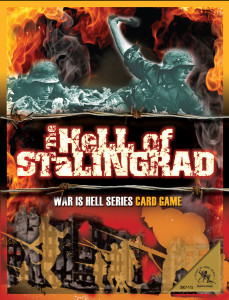 But then we come to a paradox in the nature of successful design within the hobby, for while certain subject matter may benefit from the more dispassionate approach, other material flourishes when the imaginative force of the designer is allowed to run riot. In this context I am thinking of two outstanding pieces of design by Steven Cunliffe – The Hell of Stalingrad and The Fires of Midway. For an introduction to the Midway game, I strongly recommend the YouTube film made by Derek Case (Singlehandedwarfare), which is one of the most articulate and engaging of introductions to a game you could ever wish to encounter. In many respects, these two designs are as far into the alternative process of board wargaming as you could hope to get, combining radically alternative presentation and function with a markedly over-the-top sense of “comic book” combat. I hope that is not overplaying my perceptions, but these games, and perhaps especially in the case of Stalingrad, are about battle with any notion of finesse, glamour, or fancy derring-do thrown right out the window. Working almost entirely through a range of different card types – big cards for terrain locations/ship units, smaller cards for actual forces and events, the thing really does come across, at least to me, as a battle across an unfolding narrative of comic book panels, and it is an experience of worth, utterly different, and totally valid as a simulation experience.
But then we come to a paradox in the nature of successful design within the hobby, for while certain subject matter may benefit from the more dispassionate approach, other material flourishes when the imaginative force of the designer is allowed to run riot. In this context I am thinking of two outstanding pieces of design by Steven Cunliffe – The Hell of Stalingrad and The Fires of Midway. For an introduction to the Midway game, I strongly recommend the YouTube film made by Derek Case (Singlehandedwarfare), which is one of the most articulate and engaging of introductions to a game you could ever wish to encounter. In many respects, these two designs are as far into the alternative process of board wargaming as you could hope to get, combining radically alternative presentation and function with a markedly over-the-top sense of “comic book” combat. I hope that is not overplaying my perceptions, but these games, and perhaps especially in the case of Stalingrad, are about battle with any notion of finesse, glamour, or fancy derring-do thrown right out the window. Working almost entirely through a range of different card types – big cards for terrain locations/ship units, smaller cards for actual forces and events, the thing really does come across, at least to me, as a battle across an unfolding narrative of comic book panels, and it is an experience of worth, utterly different, and totally valid as a simulation experience.
However, and perhaps predictably, neither game has really set the hobby ablaze with their brilliant graphic renditions of hell and fire, and in terms of that sincerest form of flattery, emulation, we have not really seen anything similar. Furthermore, it has been quite a while since the second game, The Fires of Midway, was released, and while there has been serious intent to do a third game in the series, for reasons that probably have a lot to do with the realities of the hobby and its often limited resources, it has been a long time coming. This, I think, is one of the barriers that the radical has always tended to face – a new type of almost anything needs to build up impetus, and when that impetus is thwarted for whatever reason, passions inevitably cool. I could also remark that the radical needs its spotlight, a serious bit of “Look at Me!” within the hobby – difficult to achieve when, apart from everything else, each and every quarter can see us deluged with new titles from the bigger companies out there.
And if I add a bit more personal opinion here, I must admit my excitement about a third game took a bit of a knock when I learnt what it was going to be about – Normandy. For whatever it is worth, this is too “safe” an option as far as I am concerned, and too much going the old familiar paths rather than letting this great concept have its head. For me, depicting the final days in Berlin back in 1945, or using a setting from Vietnam, or taking the model to the Great War, and using its clean savagery to depict Third Ypres, The Somme, Verdun – all battles which the hobby has done little or next to nothing with because the older models just do not fit the bill when it comes to making attritional warfare engaging and entertaining – that, for me, was the way to go, but then, in all fairness, that really is just my voice and opinions will vary.
And opinions are also likely to vary when I come to my next two original offerings. Tucked away in their own little cranny, these designs have hardly staggered the hobby with the insistent presence of the new and vital, but both are nonetheless indicative of a different approach to board wargaming that I personally would like to see more of – if only they, or at least the concepts behind them, could overcome the inertia that hobby realities, in various forms, beset them with. The two games I am referring to are Waterloo: Enemy Mistakes, and what was first presented as part one of Hermann Luttmann’s Tattered Flags system, Gettysburg: The Wheatfield. What these two designs have in common, at the most obvious level, is that they are both “pure” minis games, played on a grid-less board/map, with units replacing stands of painted miniatures. Yes, plenty of games in the hobby’s history have had some nuance of a miniatures approach, but these two titles really did represent that aspect of simulation brought into the boardgame world, and that without the chore of doing all the collecting and painting.
Then again, both, for different reasons, have failed to advance their cause at the first push; and that fits into an unhappy pattern of drag and of falling short that sometimes afflicts the truly different and radical within our part of the gaming world. In 1983, the team behind Up Front thought they were presenting the hobby with a sensation in the making. Today, part driven by nostalgia, and part by the fact that it was never replaced by anything better, forums are filled with posts wondering about the prospects for a game that went out of print way back in the day. Up Front wobbled and fell for several reasons, some of which were to do with the clutter in the system, some to do with the punters never buying the base game in the projected numbers, and some linked to the lackluster expansions – Desert War and Banzai: sand, dust and jungle heat played out on cards still depicting nothing more than Doctor Zhivago’s catchment area. One can certainly argue that Up Front was ahead of its time in many respects, and that very fact perturbed potential buyers; but then again, it was in other ways a bit too much of its time in how the rules worked out, how an apparent predilection for detail led to pages of unnecessary minutiae clogging the system, and how it was “haunted” by the presence of early 1980s Squad Leader to the point of thinking it had to be the same thing by different means.
The designs of Rachel/Bowen Simmons have fared better, it seems, within the economies they have worked with, and I doubt if the designer ever thought they would top the all-time sellers’ lists. Nevertheless, the eschewing of just about every norm of the standard board wargame model must have been a bit of a risk, but I like to think that in these days players can recognize the elegance of true originality when they see it, and will support it with purchases. The first game in this genre, Bonaparte at Marengo, was hardly on a “crowds at the shop door” topic, and to some extent you could say that also of Napoleon’s Triumph (Austerlitz). But, if you craft a design as well as these were put together, both in their mechanisms and their physical appearance, you are likely to get an audience. Just how much of an audience one might question up to a point, and while the designer did publish the first two games largely, or entirely, off her own bat, a variety of issues led to her needing a company to come in to support the Gettysburg game. I do not know if Rachel approached the “majors” in the hobby, but in all fairness to Mercury Games, they did a first-class job with the game’s production, and no other company could have done any better.
Whatever element of player resistance may exist with regard to certain approaches to conflict simulation, titles fitting that definition are not helping themselves if the design/production team are not that available post-release, or the product lacks that final level of polish and testing, or if the promise of a related series turns into so much air because of how the hobby sometimes miscarries despite the best of intentions. And this brings us back to the broad definition of drag and inertia I referred to earlier. The rulebook to Waterloo: Enemy Mistakes was wordy, in places very difficult to interpret, full of superfluous artwork illustrations and bland historical commentary, and these elements taking up space that should have been used to present some key examples of play. To be fair to the game’s production team, a substantial examples of play document did appear online, but that was never the best place for it, and from what I could sense, players were already a bit disenchanted with the effort of working with the design by the time this guide appeared. As a result, what was in many other respects a physically very attractive foray into marrying board wargames with miniatures has ended up on BGG with scarce a post put its way.
To reiterate, Waterloo: Enemy Mistakes was, sadly, a good example of how what was meant to be rendered as a fun, entry-level “minis-meets-boardgame- project” became one almighty and complex wrestle with the rules. Gettysburg: The Wheatfield was, I think, a more detailed model, aiming for a rather more complete minis approach. The first installment got a good reception, with players like me intrigued and excited about the project – and of course, most things Gettysburg, if done competently, it had an audience. Overall, the intention was to present a fair portion of the late afternoon/early evening attacks by Longstreet’s Corps against the Union left – several units/stands per regiment, and, depending on scenario and just how much of the total design you had, several regiments, or a considerable number of regiments, on the map. The subject matter and the system married together well, and I, like not a few other people, was looking forward to the later parts, to build on what we had in the first installment – only those parts never appeared in further VPG releases.
To be blunt, new systems/new series are never going to survive the sort of delay and uncertainty we saw here. The designer was definitely keen to progress the project, but sadly, not all the right gears could be made to mesh together when that needed to happen – the designer had the pressure of other projects, and VPG, amongst other things, was looking to upgrade its component production, which made the first installment rather less than wholly compatible with what was supposed to come along later, unless it got an upgrade. Furthermore, despite those perfectly respectable and workable components from the earlier VPG days, and Rick Barber’s usual exemplary work on the map design, the map that came with the first installment, to my eyes at least, was essentially a map of nothing very much, with precious little to offer any sort of focus to draw the eye into the world and make the project really come alive.
If I had been in a position to offer feedback on the project, I would have said that whilst the famous wheatfield was indeed there, it was not in a way that really gave it any form of geographical context, and overall, the effect was rather like trying to sell a fine painting on the basis of only allowing prospective buyers to glimpse a bit of sky somewhere off to one side of the thing. It will be up to the individuals who bought the game to decide whether the installment plan would have worked for them, but it is worth pointing out (at the risk of stating the obvious) that a game in installments is not the same as a series of closely or loosely-related, self-contained games, and that on its own, the initial presentation of The Wheatfield probably did not offer enough to keep expectation going, and did not leave those same players with much more than an oversized postcard game when the design disappeared into the mists. And the very fact that Consim Press, years on, is presenting the whole design vision as one complete retail project rather spells out what ideally should have happened in the first place.
To conclude, if we look at the experience of the games I have included in this article, there is one little pitfall we should be aware of. Readers would rightly conclude that none of the games above that one might consider to have misfired actually did so purely because of player resistance to the new and the different. Even Up Front, which was such a different concept at the time of its release, had far too many other issues for its falling away to be deemed merely the inevitable consequence of its own radical innovation. But that has to be balanced by the fact, as I see it, that designers and companies have rarely ventured that far into the “wilds” of the unorthodox, and so it is that more difficult to ascertain what the pattern might be if we simply had more to go on. But do companies, at least for the purposes of evaluation, get that many plausible designs of a thoroughly different or daring nature? It seems to me that not a few of designs that I would define as such have been put forward by companies/individuals/groups of individuals dedicated to that purpose. Let me bring a couple more designs into this matter – W1815 and Brandywine (from the “pub battles” concept). There are all sorts of reasons why games go down what I will term, for want of another title, the “independents” route. But, both of these games, as concepts for battle simulation, offer much that is new and both are not coming into the market via the familiar publishers. Again, there are various reasons one might cite, certainly in the case of W1815 as a game from Finland and a small game at that, but even if that W1815 model were applied to a physically bigger game, and with a few embellishments thrown in, where would it find a publishing home other than where it did? 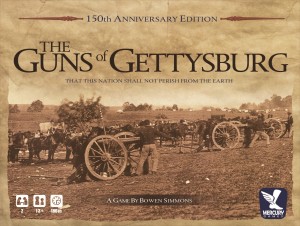 And then I recall Rachel Simmons and The Guns of Gettysburg. Following, as far as I can tell, a largely independent route with her earlier designs, circumstances necessitated she find help for the third game, and as I said earlier, that help came via a company that no one would place in the board wargaming mainstream (Mercury), but which did an exemplary job in making the physical product match the designer’s vision – and well done all round.
And then I recall Rachel Simmons and The Guns of Gettysburg. Following, as far as I can tell, a largely independent route with her earlier designs, circumstances necessitated she find help for the third game, and as I said earlier, that help came via a company that no one would place in the board wargaming mainstream (Mercury), but which did an exemplary job in making the physical product match the designer’s vision – and well done all round.
So it is open to conjecture as to how many designers dare to think differently, and that with something more than just hope that their concept will find a home as a tested and published title. Perhaps it is too wild a bet for many designers and companies, when safer designs are more likely to find acceptance and a market. And do players give enough of a welcome to any suggestion of the radically new? The one thing I do consider as certain is that no game will thrive if it is not properly tested and properly supported post publication, and for the radical, that is even more important as players could well be getting something that is entirely out of their comfort zone. And yes, there are other games I might have included here, such as the fantastic (and very successful) Commands and Colors series, but I think I have provided enough food for thought in the article as it is, and at the least, I hope my own personal take on this subject will entertain and provoke some discussion.
Paul Comben


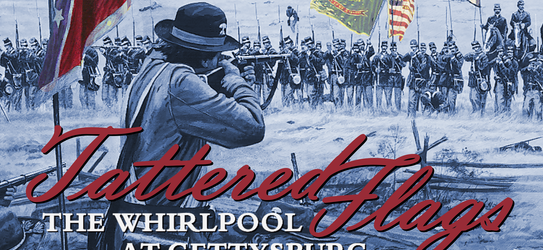
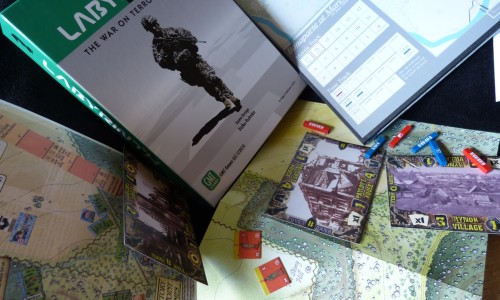
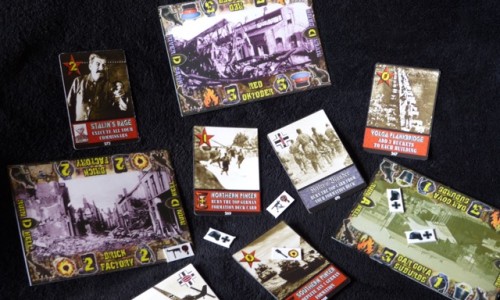
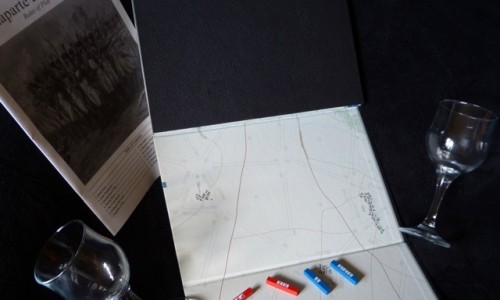
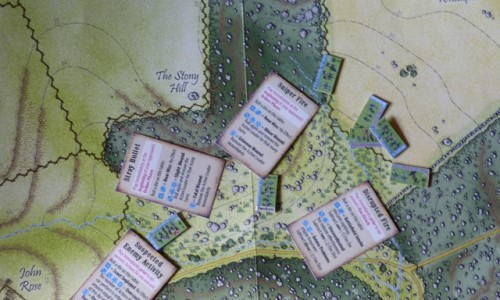
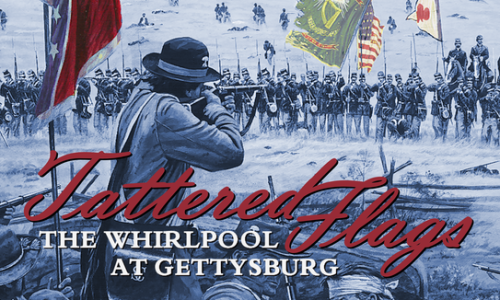
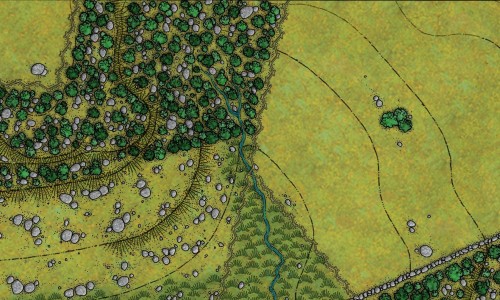
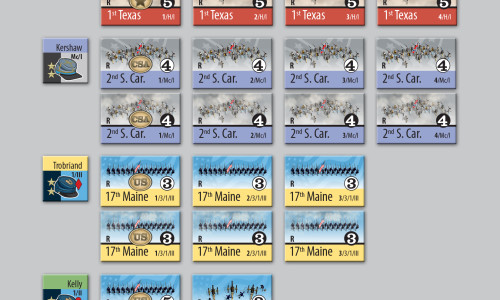
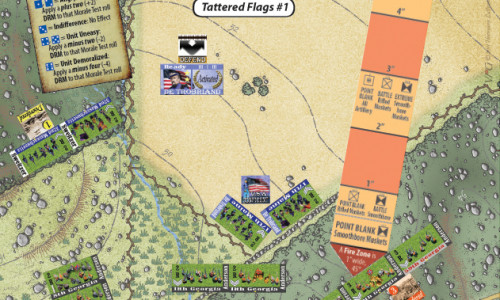
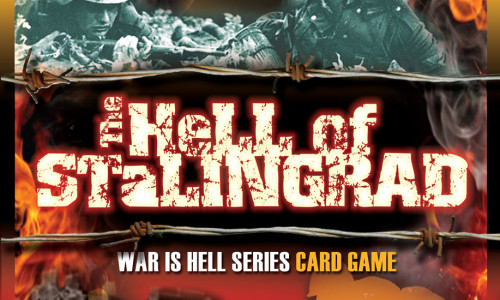
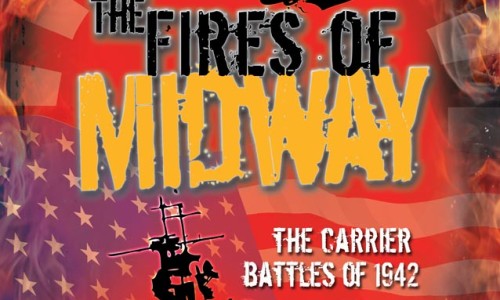
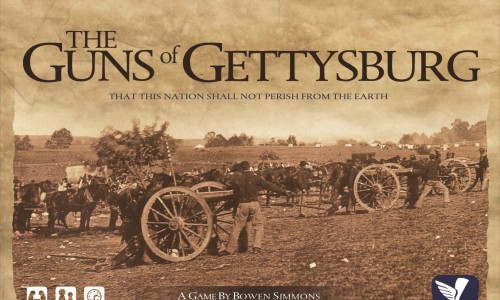
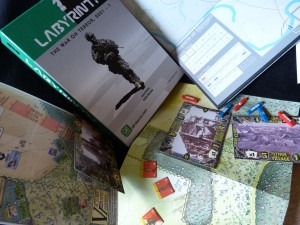
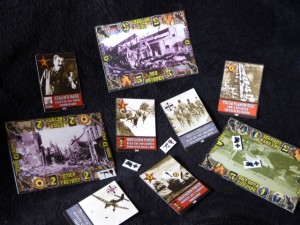
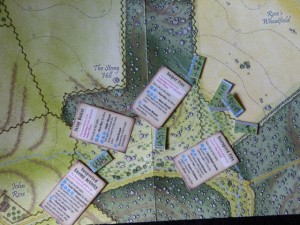
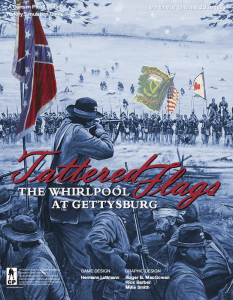
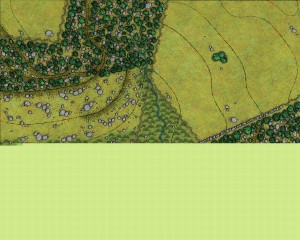
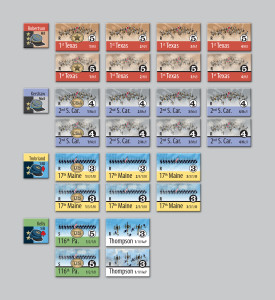
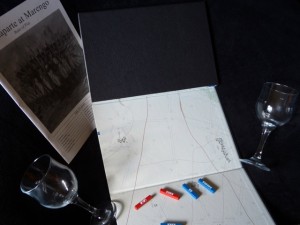
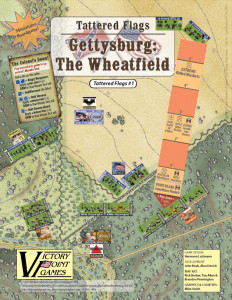






Thoughtful piece. Thoroughly enjoyed it. Thank you!
Many thanks. Glad you liked the article.
You mention the lack of attention given to Waterloo Enemy Mistakes. Couldn’t this be due to its substantial price ($90) and the fact that only Noble Knight games is carrying it in the US?. Also, why no mention of the card driven wargames and the area impulse games?. It seems to me that they paved the way for COIN. Also, isn’t it a bit inconsistent to rule out Jutland, a minis/boardgame hybrid, while praising Waterloo… And Tattered Flags for being just that?
A article on these lines faces a couple of issues: no one will agree on what should be in or out, and even if you want to put more in, there are space considerations.
What I most wanted to do was highlight games that had something profoundly different about them, and to do so whether the concept in question proved a great success or had problems. Some if the games I featured have been a major success, but I think it is also interesting to see where and why something different has not done so well.
As I said in the article, Jutland was omitted because the way it was done was, at least for me, an obvious way to do the battle. There was nothing too obvious about doing Waterloo or part of Gettysburg as a minis hybrid. And Waterloo EM was for me a good example of a different idea that has suffered because of issues that could have been avoided – such as with the translation, And because I am English I have no idea how the game’s distribution has been handled across the ocean from me.
And yes, area impulse and card driven games are notable markers along the way of design, but in my opinion not so utterly different as a Rachel Simmons work, the overall concept and presentation of COIN, or the cohesive narrative game fiction of Ambush.
Excellent thought provoking article
On a separate note I heard on a podcast that you did that you live in the Morecambe Bay Area
I live in Heysham so if you ever need an opponent for the odd game let me know
Thanks
Thanks James
I am not too far from where you live, and yes, I would be interested in some gaming time. I’m not certain how to swap details privately, so if you have any ideas I’d be grateful! Fred Manzo is a good friend of mine, so I’ll ask if he can help.
Please keep in touch and I’m sure we’ll sort something out.
Paul
Hi, James:
If you are still interested in communicating with Paul Comben just drop me a private note via the “Contact Us” button at the top of the page. I’ll be more than glad to pass it on to Paul.
– Fred